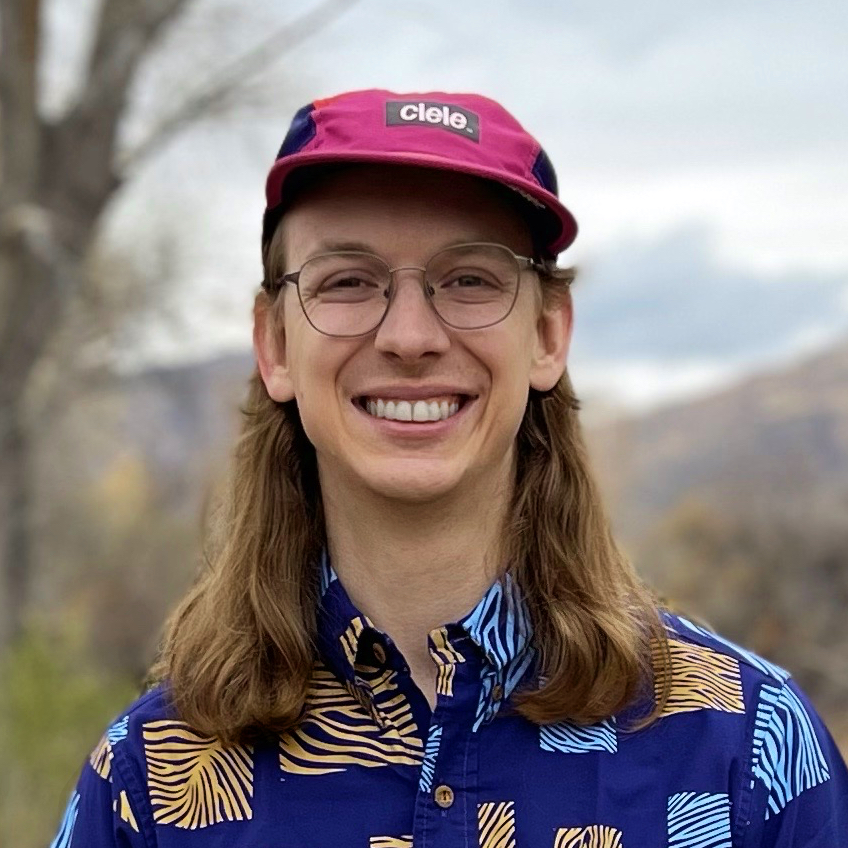

Join BirdNote tomorrow, November 30th!
Illustrator David Sibley and actor H. Jon Benjamin will face off in the bird illustration battle of the century during BirdNote's Year-end Celebration and Auction!
Sam ‘Ohu Gon is the Senior Scientist and Cultural Advisor for the Nature Conservancy of Hawai‘i. He's something of a rare combination: academically trained in conservation biology as well as traditionally trained in Hawaiian chant and ceremony. Sam's work tries to bridge traditional Hawaiian knowledge with conservation to ensure the remaining species stay with us.
BirdNote®
Bridging Hawaiian Culture and Conservation
Written by Mark Bramhill
Mark Bramhill: This is BirdNote.
Sam ‘Ohu Gon is the Senior Scientist and Cultural Advisor for the Nature Conservancy of Hawai‘i. And he's something of a rare combination.
Sam ‘Ohu Gon: I'm academically trained as a conservation biologist. But I was also trained traditionally in Hawaiian chant and ceremony by a recognized master, Kumu John Keolamakaʻāinana Lake. So that combination allows me to take the best of both knowledge systems to better appreciate and work toward the protection and preservation of our native Hawaiian bird life.
Mark Bramhill: It started back when Sam was growing up — up until high school, he hadn't been exposed to much of Hawaiian culture.
Sam ‘Ohu Gon: At the time that I was in high school, the Hawaiian Renaissance was just getting started. And so for most people, hula was cellophane skirts and coconut bras while sipping a mai tai at a hotel in Waikiki, right? It had very little to do with the true richness of Hawaiian culture.
[Sam performing original chant Mai ka wēkiu lani He mele inoa no Kiwikiu begins in the background]
Mark Bramhill: But at an all-student assembly, he got to see a performance of real hula and chant, and Sam was amazed.
Sam ‘Ohu Gon: I was dumbfounded because I had never seen traditional hula or the chant styles. And something, something sparked there.
[Sam performing in the foreground]
Lēʻī ʻo Koʻolau i ka nuku manu e!
Koʻolau district is brimming with birds!
Mark Bramhill: Sam went off to college and ultimately got a PhD in Zoology. And he came back to Hawai‘i to work for the Nature Conservancy as an exploratory biologist, hiking around habitats all across the archipelago to see, hear, and study the plants and animals in those places. At the same time, Sam's future wife was studying traditional hula.
Sam ‘Ohu Gon: And she was undergoing her uniki as a dancer. Uniki is a year of challenges. They had to do all kinds of things, make certain dyes and cordage the like. And because by that time I was familiar with native plants and animals and went hiking all the time, I knew which plants provided a red dye, a yellow dye, a black dye, a brown dye.
And so I started taking her cohort of Uniki students up into the mountains every weekend, in order to gather those items. And, on those hikes, the chanters in the halau knew that I spoke Hawaiian and they said, “Oh, you should take chant from Kumo Lake. You would just love it.”
Mark Bramhill: Sam wound up going down a decade-long path training in Hawaiian chant. And as he trained in this art, while traveling all around Hawai‘i studying its ecology…
[Sam performing original chant Mai ka wēkiu lani He mele inoa no Kiwikiu begins in the background]
Sam ‘Ohu Gon: I realized that chant was the medium of knowledge exchange in ancient Hawai‘i, and that you could learn so much from the words of chant because chant relied so heavily on natural metaphors so when they described a certain bird from a certain place, you knew that bird was in that place at the time that the chant was composed.
I began to realize that, here was a knowledge base that offered a window on an ancient world. And that if you're interested in reconstructing that world, Hawaiian chanting traditions would be one of those sources that you could rely on.
They turned out to be magically complementary. You know, it's an amazing, amazing thing.
Mark Bramhill: Here, Sam is performing an original chant he wrote on the occasion of bestowing the Maui Parrotbill a new Hawaiian name, after the original was lost to history. Its name is kiwikiu.
[Sam performing in the foreground]
Kiwikiu e! e Kiwikiu e!
O Kiwikiu! O Kiwikiu!
He manu laha ʻole ʻoe, kū i ka nani
Thou outstanding bird, blessed with beauty.
Kiwikiu-kiu-kiu, kiwikiu e!
Kiwikiu-kiu-kiu, o Kiwikiu!
Nū kiwi ʻaki mau pouhananuʻu
Stout curved beak, ever-snapping
Aʻe mai a noho mau i kō haka.
Approach and ever occupy your perch.
Eia ka manu la, he manu ola.
Here is the bird, a thriving bird.
E ola nō e!
Live indeed!
He inoa no Kiwikiu o Maui Koʻolau
A name chant for Kiwikiu of windward Maui
[Kiwikiu song]
Mark Bramhill: Much of Hawai‘i’s native wildlife is endangered or has gone extinct. Sam's work tries to bridge traditional Hawaiian knowledge with conservation to ensure the remaining species stay with us. Learn more at our website, BirdNote.org. I'm Mark Bramhill.
###
Producer: Mark Bramhill
Managing Editor: Jazzi Johnson
Managing Producer: Conor Gearin
Content Director: Jonese Franklin
Bird sounds provided by The Macaulay Library of Natural Sounds at the Cornell Lab of Ornithology, Ithaca, New York. Kiwikiu ML6077 recorded by Tim Burr.
BirdNote’s theme was composed and played by Nancy Rumbel and John Kessler.
© 2024 BirdNote July 2024
Narrator: Mark Bramhill
ID# OhuGonS-03-2024-07-25 OhuGonS-03


